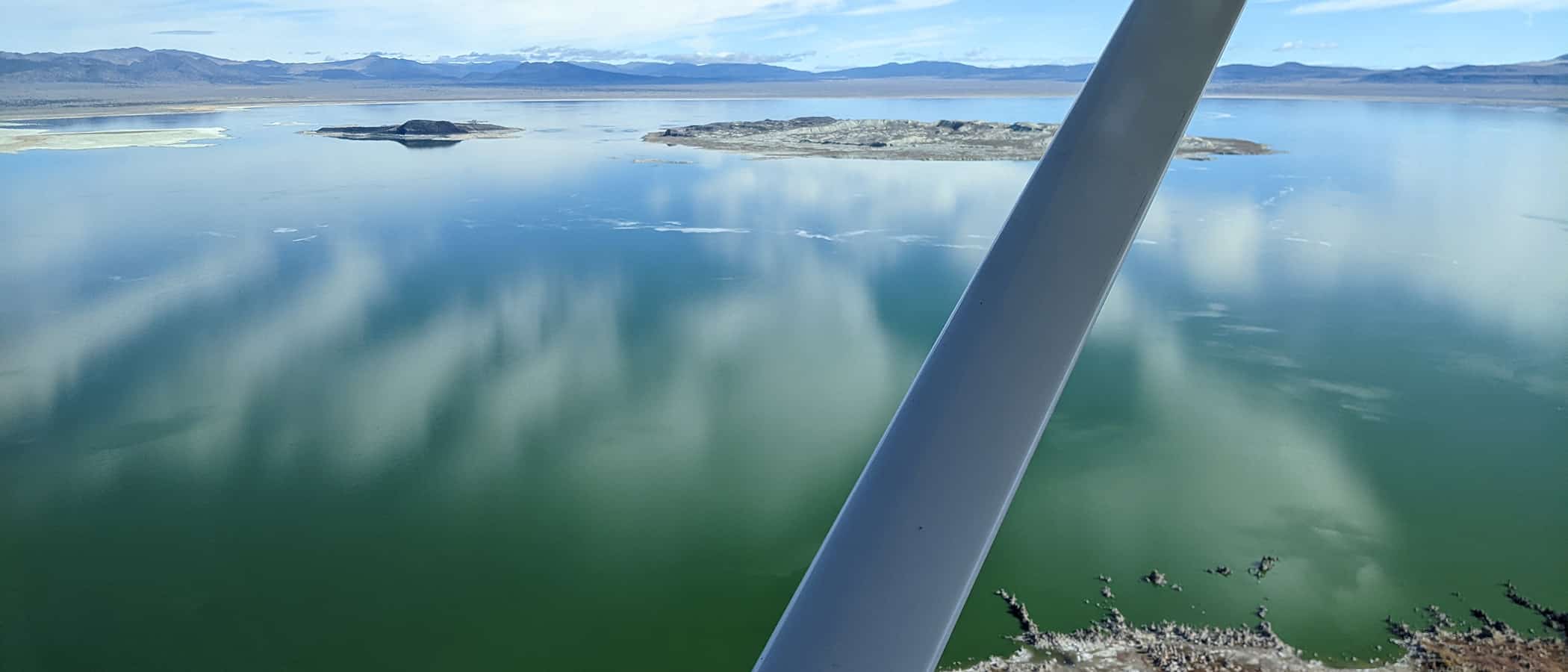
Mono Lake may be the North American Eared Grebe’s best hope for the future
Last fall marked the Mono Lake Committee’s 15th consecutive year working with Dr. Sean Boyd from Environment and Climate Change Canada to conduct aerial surveys of Eared Grebes at Mono Lake. In 2022 the Committee chartered and staffed four flights between late August and early November to photograph and quantify the number of Eared Grebes staging at Mono Lake during their annual fall migration.
Preliminary results suggest a nearly 50% increase in the number of Eared Grebes staging at Mono Lake in 2022 compared to 2021. This is in line with a steady increase in the peak number since 2017 when Eared Grebes were estimated at 276,000 birds, one of the lowest estimates dating back to 1996.
The Committee is dedicated to the protection and restoration of Mono Lake through science, policy, and education, so Eared Grebe trends at Mono Lake are a valuable metric for understanding the productivity and health of the lake. Understanding why Eared Grebe numbers were so low in 2017 and why their numbers have been increasing in recent years is vital information.
Interpreting the data
In a recent paper published in the journal Waterbirds (volume 44-1, March 2021), Dr. Boyd describes how in 2014 and 2015, our aerial photo surveys showed that large numbers of Eared Grebes arrived at Mono Lake in September, but by mid-October, when the largest number of Eared Grebes were expected to be on the lake, the numbers had declined dramatically. Dr. Boyd suggests that Eared Grebes likely left Mono Lake shortly after arriving due to limited food availability, namely brine shrimp (Artemia monica). After two consecutive years of low food availability at Mono Lake in 2014 and 2015, other data suggest that the grebes may have moved to Great Salt Lake in subsequent years and/or large numbers died during winter, resulting in the low numbers of Eared Grebes staging at Mono Lake in 2016 and 2017.
So why then have increasingly more Eared Grebes chosen to stage at Mono Lake each year following 2017?
The larger context of saline lakes
Almost the entire population of Eared Grebes in North America stage at either Mono Lake or Great Salt Lake for several months each fall. The recent increases in Eared Grebe numbers at Mono Lake might be due to consistently high survival rates, or because individuals are choosing Mono Lake over Great Salt Lake, or some combination of both. This will be closely examined in the coming years of ongoing research using the best data available to us, which will include coordination and information sharing between researchers studying Eared Grebes at Great Salt Lake, Mono Lake, and the Salton Sea, the three most popular stops for Eared Grebes.
Science and advocacy
Even though the North American Eared Grebe population is relatively large, their reliance on two hypersaline systems, Mono Lake and Great Salt Lake, makes them susceptible to environmental shifts. With reports of increasing salinity levels already threatening brine shrimp at Great Salt Lake (Artemia franciscana), Eared Grebes may rely more and more on Mono Lake in the coming years. The Mono Lake Committee will continue to assist with this important research and advocate for the restoration of Mono Lake, for all of us, and for Eared Grebes.
Special thanks to LightHawk and LightHawk volunteer pilots, who have supported the Eared Grebe research at Mono Lake by providing more than 30 donated survey flights since 2008.
This post was also published as an article in the Winter & Spring 2023 Mono Lake Newsletter. Top photo by Robbie Di Paolo.
